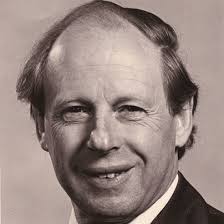The Process Safety Professional. Part 3: That Would Be Telling
The original post for this blog is here.

The Kletz Legacy
Time flies — we are coming up to the tenth anniversary of the passing of Trevor Kletz. He made immense contributions to the discipline of process safety. He is particularly remembered for his contributions to do with hazards analysis, incident analysis and inherent safety. But maybe his biggest contribution was the manner in which he communicated — particularly with regard to story-telling. The popularity and impact of his books such as Learning from Accidents and What Went Wrong? was due in no small part to the fact that they were actually story books that explained actual events. Human beings learn best from stories and Trevor knew it.
The catch is that few people who work in the process industries possess Trevor's communications skills. Process safety professionals typically have a technical background, often engineering; they are not skilled at story-telling, and have had no training in the topic. Probably the nearest they get to telling a story is when they have to write a report following the investigation of an incident, and then company guidelines and legal constraints provide little freedom for artistic creativity.
Process Safety Stories
There are, however, a few exceptions to the above observations. Examples include the Process Safety Beacon, the Chemical Safety Board videos, and the use of Safety Moments.
Process Safety Beacon
Every month the Center for Chemical Process Safety (CCPS) publishes a Process Safety Beacon in the Chemical Engineering Progress journal. Many of the Beacon messages are written in the form of a story — usually some event or near miss that can provide lessons for us all. (It is interesting to note that one of the more recent Beacons (October 2022) had the title ‘Communication — the heart of safe operations’.)
Chemical Safety Board Videos
The Chemical Safety Board provides in-depth analyses of catastrophic events that have taken placed in the process and energy industries. They also publish videos that illustrate these events clearly and vividly. These videos are also a form of story-telling, and they are effective.
Safety Moments
Many facilities have a requirement that formal meetings start with a Safety Moment. This is often an opportunity for someone to tell a story. We have therefore prepared a series of Safety Moments that have a process safety focus, and that can be used to tell a story at the start of one of these meetings. 52 of these Safety Moments have been compiled into an ebook.
Why Stories Are Important
One reason that stories can be such an effective way of communicating process safety issues is that they force the listener to think. Most reports that we read, and presentations that we hear describe a problem, and then provide a solution. Stories are not like that — they force us to put our own interpretation on events. They even force us to wonder. It is possible, we ask, that that story could repeat itself at the place where I work? Meaning is provided by the reader, not the author.
